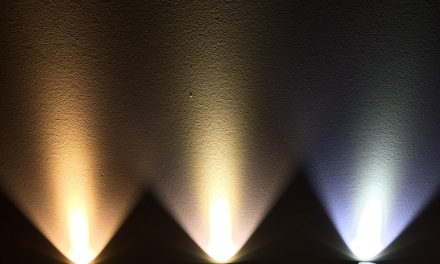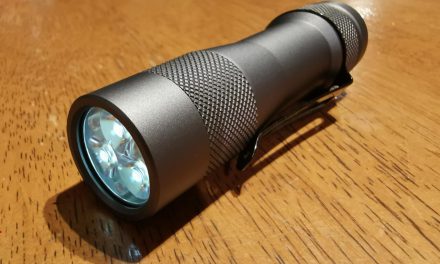
Flashlight Review: Light Excursion Deluxe RGB

Light Excursion’s colour mixing flashlights are proving very popular with light painting photographers. This has been the most requested flashlight for me to review recently, so for those still sitting on the fence, here is the review…
Introduction
Many years ago there was an interesting colour changing flashlight called the Ledlenser V24. Unfortunately it was rather fragile and was quickly discontinued just before light painting art took off big time. Since then, commercial colour changing flashlights have been quite mediocre. For example the Colorshine flashlight is dim, highly unreliable, has terrible PWM, and the side button is inaccessible in many connectors. The Concentrate C5 whilst having loads of programmable options, is only 30 lumens in output, and needs good dexterity (or luck) to turn and off successfully during a light painting scene. In response to poor options on the market, Frank Parhizgar (Light Excursion) started researching and developing RGB(W) colour mixing flashlights designed specifically for light painting photographer’s requirements.
At the time of writing there is no website, however if you contact Frank (links at the end of the review) he is very responsive at discussing which design is most suitable for your requirements. The lights are all hand made, with customisable options, including:
- 18650, 9V, or 2×10440 battery options
- Various RF remotes, Bluetooth, or WiFi control
- Master dimmer, or Red, Green, Blue, White dimmers (RGB(W))
- Master or RGBW momentary/temporary switches – i.e. the light is only on when the button is depressed
- Master on/off or on/off/strobe switches
- On/off switches for momentary/temporary and dimmer switch
- Straight (LP) or threaded (LE) pipe connectors
- Double ended, or split ended options
- Optional leather pouch
Review
This review is of the 3W Deluxe RGB LP model. The reviewed model has a 18650 battery holder, master on/off switch, on/off switches for temporary and dimmer, temporary/momentary switch, master dimmer, RGB emitters, smooth (LP) connector, and RF remote control.
The lights are handmade from mainly off the shelf components in a plastic shell. The fact that it doesn’t resemble a traditional flashlight is good, as it allows for a much better user interface for light painters. Construction quality seems good, though I haven’t accidentally dropped any yet!
The straight connector has a 28mm external diameter, which allows for connectivity with the Light Painting Brushes Universal Connector and Light Painting Paradise Adapters. If you want to build your own tools, it is also a good fit for many plumbing connectors. The other connector option – LE (not tested) is grooved internally and allows for Light Painting Brushes tools to be plugged directly in (without the Universal Connector). It can also creates an interesting beam pattern. It is also possible to fit a Lightblades KYO to the outside of this connector (not tested). The clip, and velcro connection for the remote are very nice touches.
The 3W Deluxe RGB light had a myriad of controls. You first need to turn on the master on/off switch, turn on the RF remote, and select a colour or colour effect. With the supplied RF remote control, there are 20 static colours, 22 effects with up to 10 speed levels including colour fades, pulsing (0.1-2.3Hz), and strobes (0.3-6Hz with approx. 25% on time). There are individual on/off switches for the momentary/temporary and the dimmer switch. The momentary/temporary switch is excellent for light drawing as the light is only on when the button is depressed. The dimmer allows for the output to be dimmed – useful for moonlit or astro backgrounds. The effect modes or colours can be changed whilst no light is being emitted (when using momentary/temporary switch) adding to the creativity potential from this light. The light also memorises the last used effect even if the remote has been turned off and back on again.
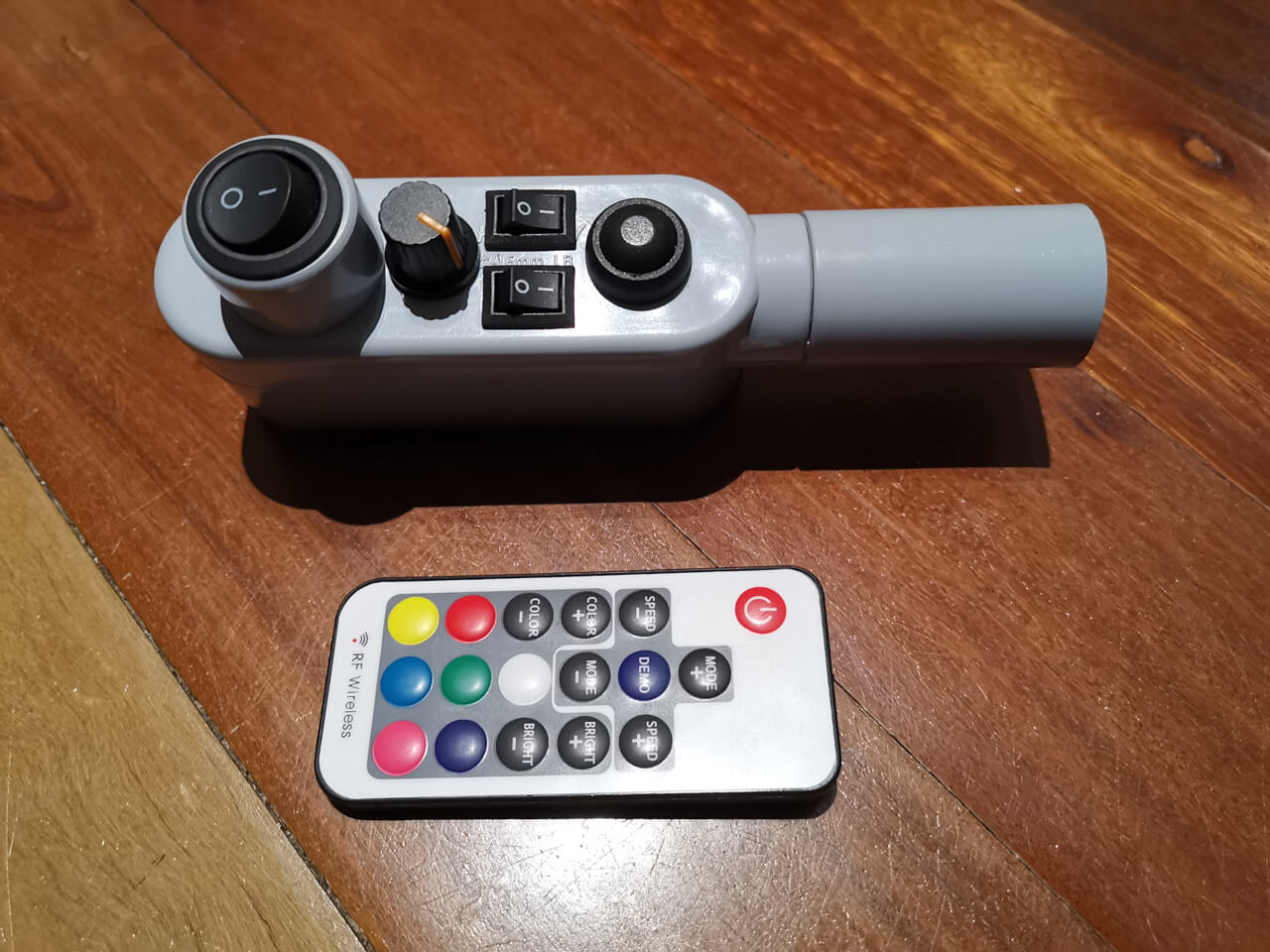
3W Deluxe RGB Light and RF Remote

Battery Compartment Open
From previous experience of using similar RF remotes for LED strip lights, I have experienced the button battery running out rather quickly. I have not experienced this with this light, however I would recommend removing the CR2025 battery when not in use to prevent parasitic drain. Button batteries should always be kept out of reach of children.
The beam with RGB all on was measured at approximately 100 lumens. This is x3 brighter than most other RGB colour mixing lights suitable for light painters. Due to the nature of RGB colour mixing lights, higher brightness would require considerably more heat sinking, power supply, and higher cost. On full output, using a Light Painting Paradise Plexi Rod, I used an exposure of f/8, ISO200, and with a White Fiber Brush I used an exposure of f/8, ISO400. The colour mixing is good enough for light painting purposes, but not in the league of colour mixing in professional entertainment lighting.
As is to be expected in colour mixing RGB flashlights (due to having to control 3 different channels) Pulse Width Modulation (PWM) can be noticeable as very fast strobing if the light trail is close to the camera. However this is less noticeable than most other RGB colour mixing lights I’ve tested.
The light tested used the 18650 battery option. The battery holder only allows for unprotected 18650 batteries, and can be a little bit fiddly to get the battery in and out. As I’m not sure if there is any low voltage or reverse polarity protection, it is important to make sure that you insert the 18650 battery correctly, and make sure that the voltage does not go below 2.5V. Other battery holder options are 2×10880 li-ion or 9V alkaline. If you do not understand the safety implications of li-ion batteries, then go for the 9V option. High quality flat top unprotected 18650 batteries I would recommend are the Panasonic NCR18650GA, LG MJ1, or Samsung 35E batteries. (Update: future versions may allow for longer protected 18650s).
Below are some examples of light paintings using different effects modes, changing colour on the fly, and using the momentary/temporary switch.
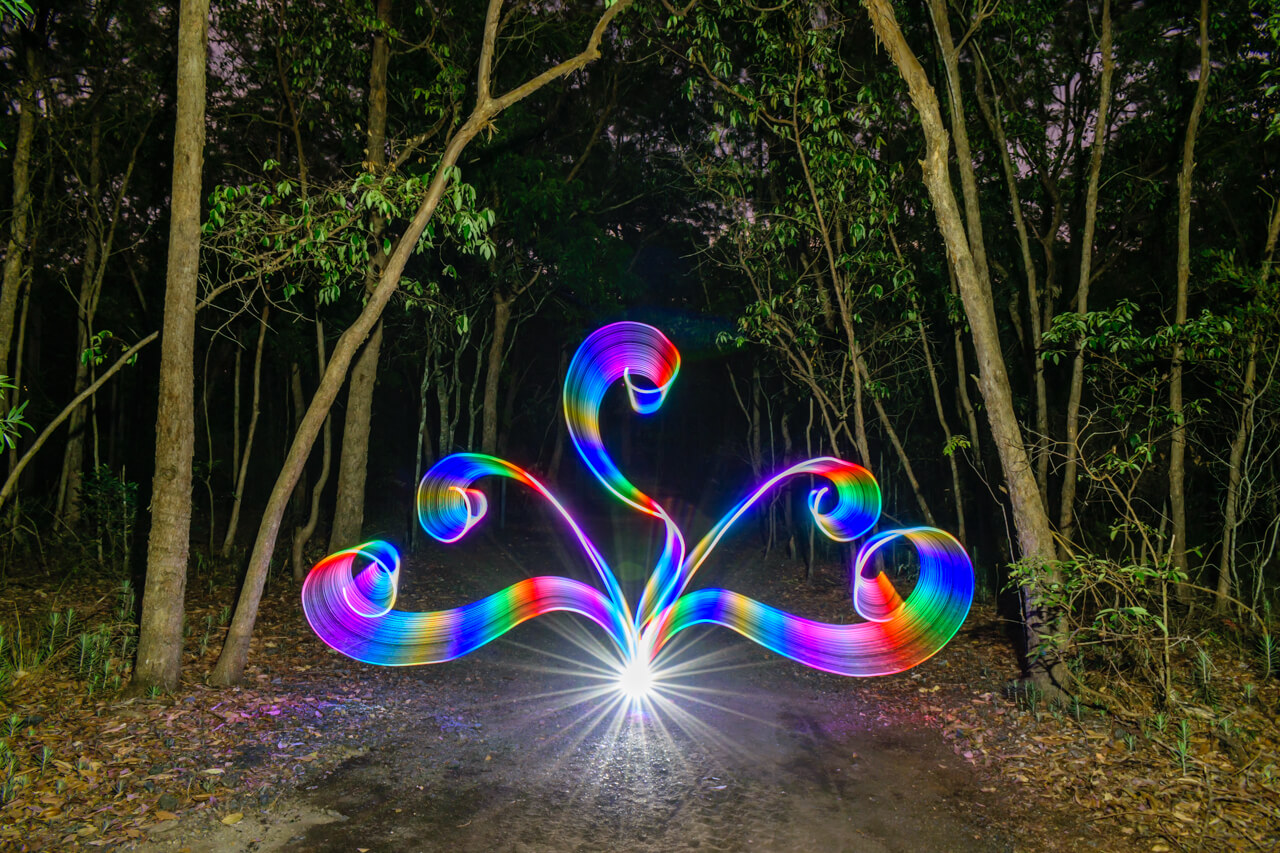
Created using rainbow fade mode (using momentary/temporary switch)
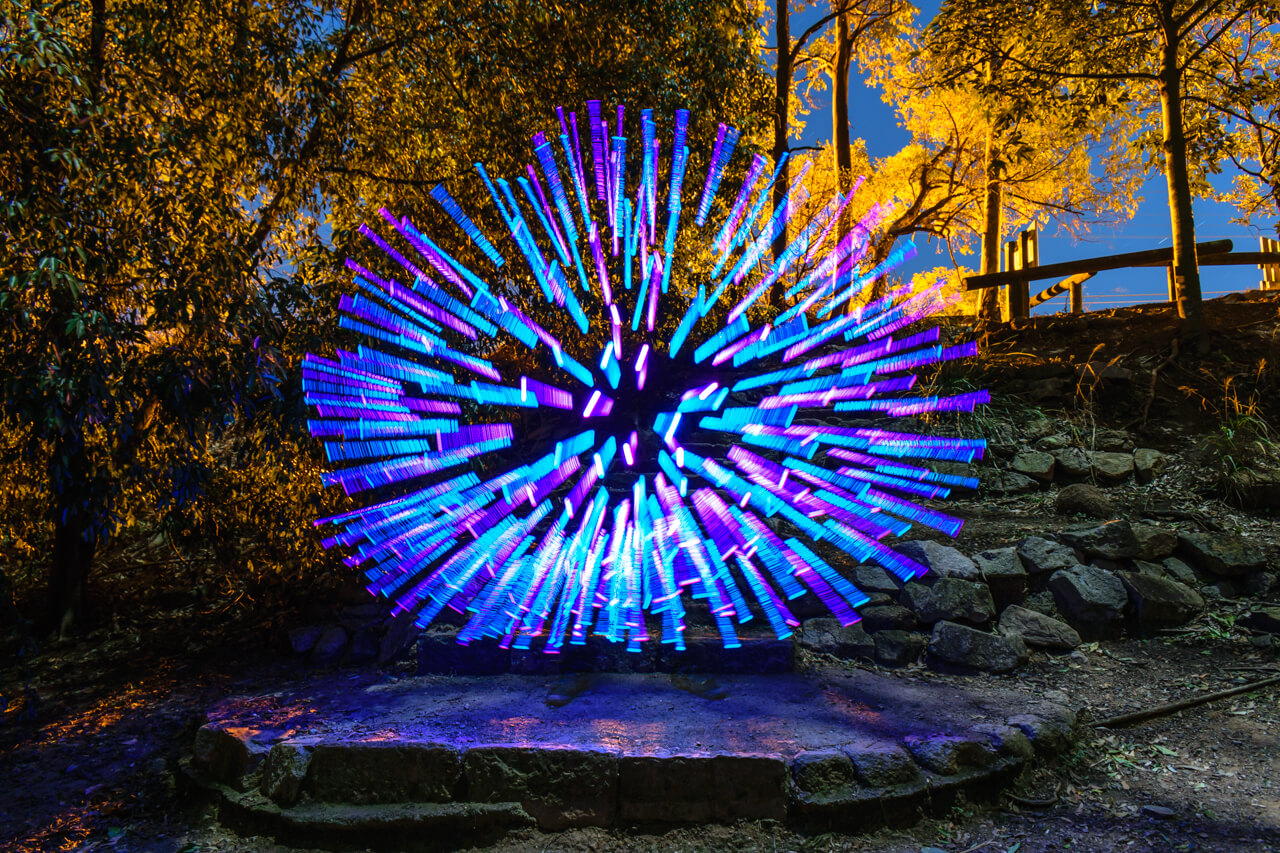
Created using strobe mode (with colour change during exposure)
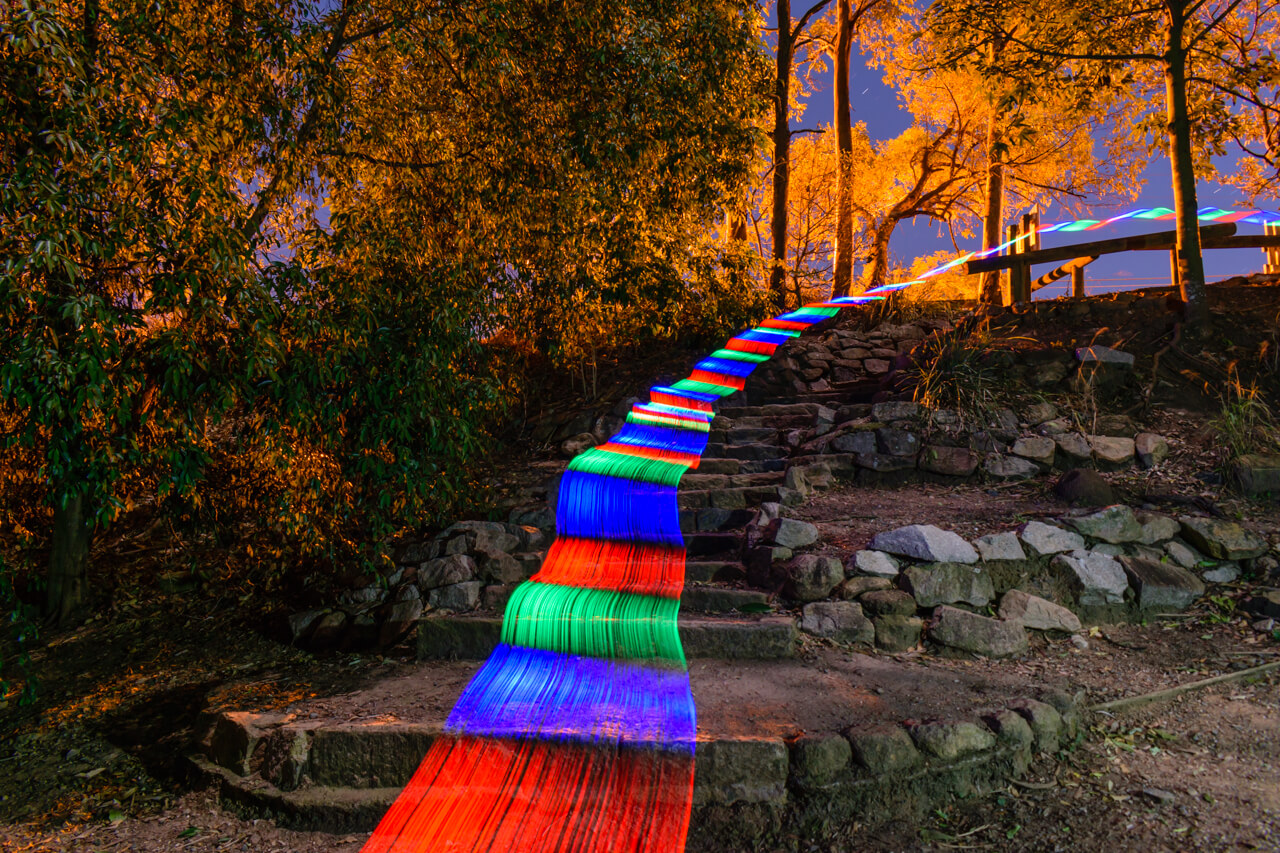
Creating using RGB pulse mode
Conclusion
Things I liked:
- Very well designed for light painting purposes
- Good brightness for RGB colour mixing flashlights
- Excellent range of effects
- Variable strobe frequency
- Effect mode memory
- Momentary/temporary switch – great for light drawing
- Dimmer switch
- Lights can be customised to user requirements
- Choice of battery options – 18650, 9V, or 2×10440
- Good customer service (via messaging on FB or IG)
- Less noticeable PWM than most other colour changing flashlights
Things I didn’t like:
- 18650 version only accepts unprotected 18650s (Update: future versions may allow for longer protected 18650s).
I very much enjoyed using the Light Excursion Deluxe RGB light for light painting. The non-traditional flashlight design allows for a much better user interface than other RGB lights. The range of customisable options allow for a fantastic light painting creativity. There is little to criticise about this light, as eliminating PWM, improving the brightness and colour mixing would significantly add to the cost of the light. It is a fantastic successor to the greatly missed Ledlenser V24, and with significantly more functionality too!
This is by the far the best RGB colour mixing light currently available for light painters, and is highly recommended. I’ll be adding many light painting photos created using this light to my Instagram feed over the next few weeks.
Light Excursion flashlights can be purchased by messaging Frank on either Facebook or Instagram.










